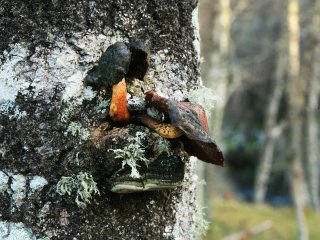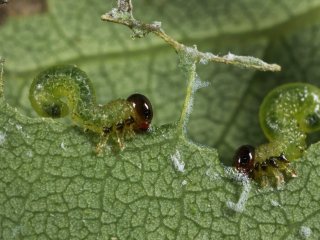The Importance of Aspen
A forest is full of unique sights and ecological diversity, a leafy paradise of vibrant hues. One pioneer species, coloured copper, red, green or yellow used to be a large part of the fabric of the Caledonian Forest and has since been reduced to small and isolated pockets. Now in leafless in winter, yet brilliantly yellow and crawling with insects only months ago, I wanted to touch on the ecological importance of aspen and its respective interspecies relationships as a small reminder of the significance of its recovery. Not to mention I am personally fascinated by beautiful plant life and any information regarding its survival!
Aspen is a key species, not only for its brilliant shades but due to the wildlife it supports, making this native tree a high priority in forest restoration. Trees for Life launched its project to establish aspen in the Highlands back in 1991 and does so through four main elements, aiming ultimately to restore the tree and the organisms that depend upon it. Certain factors such as rare seed production and new shoots being eaten by deer continue to limit its progression.

Found in ancient woods and heaths, it is unsurprisingly so that aspen is depended on by many others in the forest. The aspen hover fly is one such animal that relies upon the tree entirely. This hover fly is endemic to Scotland and found in about 12 sites in the Highlands. Without the dead wood of the tree, the eponymous hover fly cannot survive as its larvae live under the aspen's rotting wood and feed on microorganisms of the decaying sap. Facing an uncertain future, both the aspen and the hover fly are threatened. Aspens now struggle to reach maturity due to deer, meaning the amount of deadwood is imaginably scarce. With not a lot known about the species and its relationships with others, Trees for Life's ecological research on aspens provides vital. Biodiversity studies and experimental work on grafting are just some ways this is carried out. What's fantastic about this is that species are being better understood and therefore proper conservation and recovery techniques can be implemented, creating a chain effect of increased numbers of living aspens and therefore help for its community of organisms too.
The Aspen hover fly's status as endangered also affects the predators of the insect, such as local birds. In UK populations not much information has been collected on the depending mammals, although there is a large number of organisms that need aspen. With reference to these others, the aspen bracket fungus and the palisade sawfly have all been important discoveries of species in association, produced by biodiversity surveys from the Trees for Life project.

With so many dependants it's no wonder aspen is valued; There are even some organisms that are restricted to the tree itself like gall midges. Those lucky enough to spot an aspen, it's leaves characteristically fluttering in the breeze might not think twice about its solitude; however when aspen is cut down it is severely impacted, as new seeds are not produced again. With no recolonisation, aspens are far apart from others. They also face grazing damage by deer when new shoots do appear. Protection of ramets is part of Trees for Life's project and beginning in 1992, the use of tree guards has been effective in keeping deer away from growing shoots. The goal of enabling successful regeneration of ramets is well on its way.
Volunteers can help aspens on their journey to thrive, in all four areas of the project. Involvement in surveying and mapping or putting up stock fencing enclosures that prevent deer grazing are some ways. Left alone, this pioneer species can grow rapidly, it's iconic quaking leaves becoming part of the landscape. It would be fascinating to see aspens returning to where they belong, as a key component of the forest once more.
Thank you Rosie Jones for kindly writing this blog contribution.

